Encyclopedia of Automotive Engineering (6Vol Set)
Original price was: ₹210,756.00.₹168,604.80Current price is: ₹168,604.80.
ISBN: 9780470974025
Author/Editor: David Crolla
Publisher: John Wiley
Year: 2015
1 in stock (can be backordered)
Description
The Encyclopedia of Automotive Engineering provides for the first time a large, unified knowledge base laying the foundation for advanced study and in-depth research. Through extensive cross-referencing and search functionality it provides a gateway to detailed but scattered information on best industry practice, engendering a better understanding of interrelated concepts and techniques that cut across specialized areas of engineering. Beyond traditional automotive subjects the Encyclopedia addresses green technologies, the shift from mechanics to electronics, and the means to produce safer, more efficient vehicles within varying economic restraints worldwide.
The work comprises nine main parts: (1) Engines: Fundamentals (2) Engines: Design (3) Hybrid and Electric Powertrains (4) Transmission and Driveline (5) Chassis Systems (6) Electrical and Electronic Systems (7) Body Design (8) Materials and Manufacturing (9) Telematics.
Offers authoritative coverage of the wide-ranging specialist topics encompassed by automotive engineering
An accessible point of reference for entry level engineers and students who require an understanding of the fundamentals of technologies outside of their own expertise or training
Provides invaluable guidance to more detailed texts and research findings in the technical literature
Developed in conjunction with FISITA, the umbrella organisation for the national automotive societies in 37 countries around the world and representing more than 185,000 automotive engineers
6 Volumes
www.automotive-reference.com
An essential resource for libraries and information centres in industry, research and training organizations, professional societies, government departments, and all relevant engineering departments in the academic sector.
Additional information
| Weight | 0.0128 kg |
|---|
Product Properties
| Year of Publication | 2015 |
|---|---|
| Table of Contents | Editorial Board Dedication Foreword Preface Part 1 Operating Principles Thermordynamic Analysis Fundamental Chemical Kinetics Fundamental Combustion Modes Solving Combustion Chemistry in Engine Simulations NOx Formation and Models UHC and CO Formation and Models Particulate Formation and Models Gas Exchange - Breathing and Air Management Fuel Introduction In-Cylinder Flow Spark Ignition Combustion Diesel and Diesel LTC Combustion Advanced Compression-Ignition Combustion for Ultra-Low NOx and Soot Pressure and Heat Release Analysis Zero- and One-Dimensional Methodologies and Tools Multidimensional Simulation Fuels for Engines and the Impact of Fuel Composition on Engine Performance Intake Boosting Exhaust Gas Energy Recovery Engine Thermal Management Lubrication and Friction Gas Aftertreatment Systems Solid/Condensed Phase Aftertreatment Systems Engine Performance Exhaust Emissions Fundamentals Trends Spark Ignition Trends Compression Ignition Part 2 Automotive Diesel Engine Development Trends Critical layout dimensions Cranktrain Development Cooling Systems Lubrication systems Piston and ring development Valvetrain development Material and Process Selection Cylinder Blocks and Heads Block and Head Analysis Gaskets and Sealing NVH Considerations in Engine Development Turbocharging Supercharging Diesel Fuel Injection Systems Emission Control Systems - Oxides of nitrogen Stoichiometric Exhaust Emission Control Exhaust Emission Control Considerations for Diesel Engines Engine Management Systems Engine/Transmission Matching Drive Cycles Fuel economy optimization Part 3 Overview of Electric, Hybrid and Fuel Cell Vehicles EV powertrain configuration EV powertrain parameters EV auxilaries Basic consideration Micro, mild and full hybrid Series Hybrid Electric Vehicles (SHEVs) Parallel Hybrid Electric Vehicles (Parallel HEVs) Series-Parallel Hybrid Electric Vehicles Range extender EV All-Wheel Drive Hybrid System EVT and E-CVT for Full Hybrid Electric Vehicles Power and Energy requirements for electric and hybrid vehicles Rechargeable Battery Basics Advanced batteries for vehicle applications Batteries indication and management Battery safety for lithium batteries in vehicle applications Fuel Cell Powered Vehicles Ultracapacitors in electric drive vehicles General requirement of traction motor drives DC motor drives Induction motor drives Future direction of traction motor drives Regenerative braking systems Energy management systems of EVs Energy management systems of HEVs Battery charging standards Communication of Electric Vehicles Voltage Control and Frequency Control Impact of electric vehicles on low-voltage supply systems Part 4 General Introduction - basic definitions, structure of Part 4 Transmission Gear Design Loads & Bearings and Bearing Failure Mechanics of contacting surfaces Tribological optimisation in the powertrain Synchronisers - gear change process, loads, timing, shift effort, thermal loads, materials and tolerances Dry Clutch Clutch Wet Automotive Torque Converters Manual (MT) - layouts, design considerations, packaging & manual shift mechanism, manufacturing & assembly Automatic Transmissions - geartrain combinations, components, design considerations, hydraulic system, packaging, manuf., assembly The variable pulley CVT Traction drive CVT Power Split Configurations Dual Mass Flywheel (DMF) Propshafts (Driveshafts) Coupling connections and splines Articulated Joints and Couplings Cardan and CV Joints Axle Systems Basic Open Differentials Passive and Active Limited Slip Differentials Torque Transfer with AWD Systems Drive train noise, vibration and harshness Clutch Actuation Launch Control Control systems and strategies for automated manual and double clutch transmissions AT Control actuation methods & system integration, gear choice, gear shift strategy & process, adaptive features CVT Control - system integration, ratio choice, shift dynamics & strategy, adaptive features, engine calibration, em assist Part 5 Possibilities of coil springs and fibre reinforced suspension parts Air suspension systems, what advanced applications may be possible? The harshness of air springs in passenger cars Air supply for advanced applications Technology of active shock absorbers and benefits in regards of ride and handling Suspension arms, steel versus aluminium,where are the benefits? Performance Target Conflicts in Normal Tires and Ultra High Performance (UHP) Tires Tyre pressure monitoring systems Brake systems, an overview Carbon fibre reinforced siliconcarbide: a new brake disk material The development of alternative brake systems The Cooperation of Regenerative Braking and Friction Braking in Fuel Cell-, Hybrid- and Electric Vehicles Designing twist beam axles ULSAS Suspensions, a comparison of rear suspension design Light weight front suspensions, a comparison Active front steering for passenger cars New Electrical Power Steering Systems Steer by Wire, Potential and Challenges The potential for handling improvements by global chassis control Customer oriented Evaluation of Vehicle Handling Characteristics Automated Driving Global Chassis Control in Passenger Cars Chassis Control Systems - A Look into the Future Torque vectoring by drive train systems Chassis modeling and optimization by the advanced method ABE System Simulation in DSHPLUS, What applications are possible? Comparison of the modeling techniques for chassis applications. An advice for the user Part 6 Historical Overview of Electronics and Automobiles: Breakthroughs and Innovation by Electronics and Electrical Technology ECU technologies from components to ECU configuration Diversification of electronics and electrical systems and the technologies for the integrated systems Microcomputers and Related Technologies: Enlargement of Software Size, Algorithms, Architectures, Hierarchy Design, Functional Decomposition, and Standardization Increase of ECU and Wire harness, JB simplify and decrease networks ECU Design and Reliability Manufacturing: An Introduction to Production Technology, SCM, and Quality Assurance In-Vehicle Network Hardware-in-the-Loop Simulation The Wire Harness Batteries Generators and Charging Control Starter Applications of radio wave technologies to vehicles Applications of image recognition technologies to vehicles Vehicle safety, Functional safety, OBD diagnosis Interfaces between Sensors and ECUs Various types of sensors Ceramics sensors for power train ECU systems Semiconductor Sensor (1) Sensors for Power Trains Semiconductor Sensors (2): Sensors for Safety Systems Semiconductor Sensors (3): Optical Sensors Various Kinds of Actuators and Signal Interfaces Engine ECU systems Hybrid Systems and High Voltage Components Chassis ECU (Vehicle dynamics, ABS) Chassis ECU (Steering) Chassis ECU (ACC) Body ECU Cluster Body ECU (airbag) Body and Lighting ECU (Key-less Entry, Sonar, HID, LED Usage for Lamps) Car air conditioning and electronics: analog, digital control and zone management Car navigation Telecommunications Active safety, pre-collision safety and other safety products (millimeter wave, image recognition, laser) Part 7 Body design, overview, targeting a good balance between all vehicle functionalities Innovative structural design The Fascination of Car Body Manufacture: Requirements for car body manufacture from viewpoint of production Styling of cars, from sketch to realisation, main trends and milestones Fundamentals, basic principals in road vehicle aerodynamics & design Exterior vehicle noise development: assessment and control Vehicle vibration and harshness Vehicle architecture for meeting anthropometric, posture, comfort, health requirements of passengers Human Machine Interface design in modern vehicles Vehicle seat design, development and manufacturing Physics of car crashes: design concepts for safer cars Reparability and insurance ratings in the development of cars Adaptive Restraint Systems: Towards Integral Safety Pedestrian protection, overview Part 8 Processing of Steels Wrought Aluminum Alloys: Grades and Properties and Processing Automotive Applications for Magnesium Automotive Applications for Titanium Processing of Polymers Application of Elastomeric Components for Noise and Vibration Isolation in the Automotive Industry Trim Hybrid Structures Metal Matrix Composites: Automotive Applications Automotive Glazing Recycling of Polymers & Composites Biopolymers & Biocomposites Automotive Environmental Life Cycle Assessment Part 9 Intelligent Transport Systems: Overview and Structure (history, applications, architectures) Intelligent Transport Systems: Market and Policies Evolution and Future Trends Technologies - Communication: Mobile Technologies - Communication: Wireless LAN-based Vehicular Communication Technologies - Positioning: GNSS Tracking and navigation for goods and people In-vehicle sensors Data Acquisition by Roadside Detection Technologies - Data Acquisition: Data fusion Applications - Intelligent Vehicles: Driver Information Driver Assistance Applications - Intelligent Roads and Cooperative Systems: Urban Traffic Management Advanced Highway Management Systems Road Traffic and Travel Information (RTTI) Logistics and Fleet Management Tolling, Mobility Pricing Applications - Further Applications: Emergency Services, eCall Quality Management in ITS IT-Security for Communicating Automotive Systems Driver Distraction |
| Author | David Crolla |
| ISBN/ISSN | 9780470974025 |
| Binding | Hardback |
| Edition | 1 |
| Publisher | John Wiley |
You must be logged in to post a review.

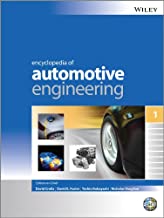
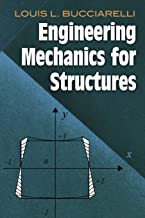
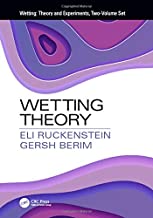
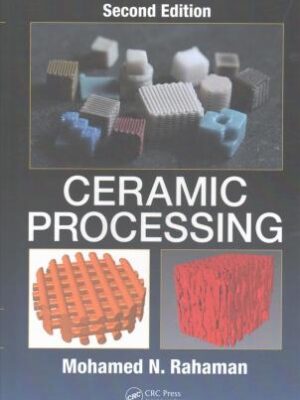
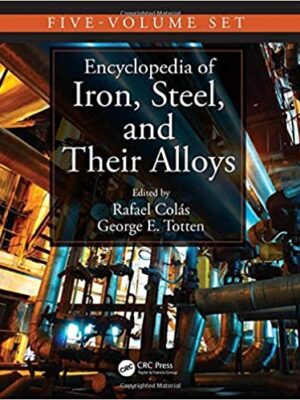
Reviews
There are no reviews yet.